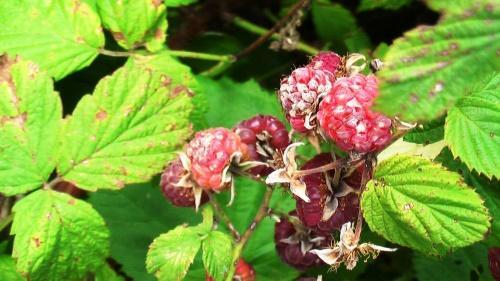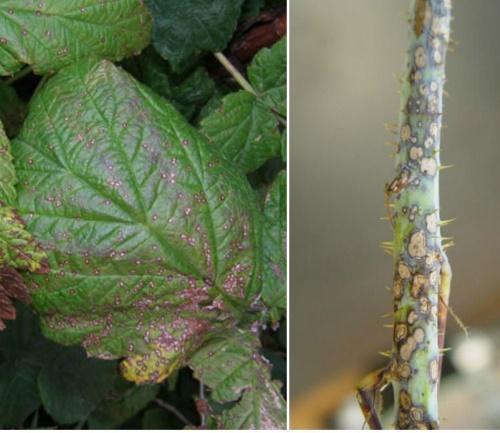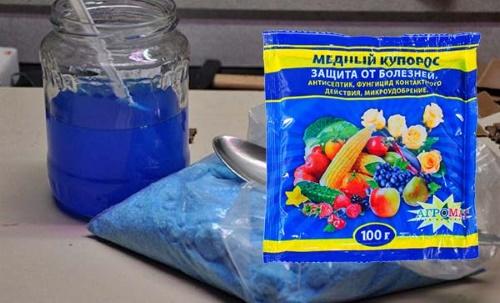Raspberry anthracnose - saving a bush from a dangerous disease
 Among the most common and dangerous diseases of raspberries, anthracnose is worth noting. A harmful fungus can not only rob you of your harvest in just a season, but also destroy all plantings. Raspberry anthracnose develops quickly and inevitably in conditions of high humidity and high temperatures. Abundant rainfall in the summer only plays into the hands of this fungus. Moreover, it is not at all necessary to "bring" it into the garden on a new seedling. The fungus is carried by wind, insects, birds and even rain. Needless to say, the affected plants themselves become the source of the spread of the disease. And if other shrubs grow nearby, be sure that anthracnose will soon appear on them. Therefore, it is important to notice the damage in time and start treating the plants. And you should also not allow favorable conditions for the development of fungal spores to be created by taking preventive measures.
Among the most common and dangerous diseases of raspberries, anthracnose is worth noting. A harmful fungus can not only rob you of your harvest in just a season, but also destroy all plantings. Raspberry anthracnose develops quickly and inevitably in conditions of high humidity and high temperatures. Abundant rainfall in the summer only plays into the hands of this fungus. Moreover, it is not at all necessary to "bring" it into the garden on a new seedling. The fungus is carried by wind, insects, birds and even rain. Needless to say, the affected plants themselves become the source of the spread of the disease. And if other shrubs grow nearby, be sure that anthracnose will soon appear on them. Therefore, it is important to notice the damage in time and start treating the plants. And you should also not allow favorable conditions for the development of fungal spores to be created by taking preventive measures.
The disease "works" on the entire plant, affecting all its parts. First, it appears on the leaves, then goes to the shoots and finally attacks the berries, both ripe and green.
Raspberry anthracnose - how the disease manifests itself

- Small rounded spots of gray-brown color with a dark rim appeared on the leaves. Later, these spots merge, and the tissue is necrotic. The foliage dries up and falls off.
- On young twigs, small sores are formed in the form of brownish stripes along the shoots. Gradually, they expand and ring the shoot, pinching it and preventing the supply of food. In drought, branches damaged by ulcers begin to crack, and after rain, they rot.
- The tops of the stems and flowers begin to dry out.
- The berries stop developing, become stained and dry out.
Bushes affected by anthracnose often do not survive the winter and die, but the frost itself is not terrible for the fungus. The mycelium winters well on branches and in the soil. In the spring, it begins to multiply with renewed vigor and spread throughout the entire site.
How to treat raspberry-infected raspberries
 At the first detection of at least one diseased raspberry bush, all plantings must be treated with special preparations. Do well with anthracnose:
At the first detection of at least one diseased raspberry bush, all plantings must be treated with special preparations. Do well with anthracnose:
- copper sulfatefrom;
- Oxyhom;
- Acrobat MC;
- Cuproxat;
- Sandofan.
Preventive measures in the fight against anthracnose
 Strong and healthy bushes are less likely to get sick, so do not forget to feed raspberries in a timely manner. Also weed and dig under bushes. Immediately remove and burn all affected shoots so that the fungus does not spread further. Do not forget to thin out the raspberries in the fall by cutting out the sprouted shoots near the ground.
Strong and healthy bushes are less likely to get sick, so do not forget to feed raspberries in a timely manner. Also weed and dig under bushes. Immediately remove and burn all affected shoots so that the fungus does not spread further. Do not forget to thin out the raspberries in the fall by cutting out the sprouted shoots near the ground.
In the aisles and along the perimeter of the raspberry tree, you can sow plants, the smell of which will scare away birds and insects that carry spores. It can be wormwood, basil, elderberry, calendula, marigold, celery.
Breeders have developed varieties that have increased resistance to anthracnose. Among them are Raspberry Meteor, Cascade, Scarlet Sails, Gloria, Cumberland, Solnyshko.